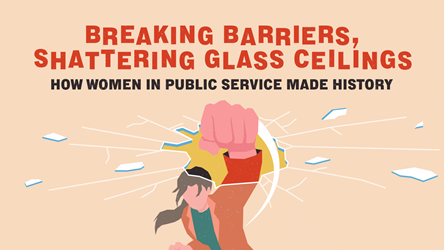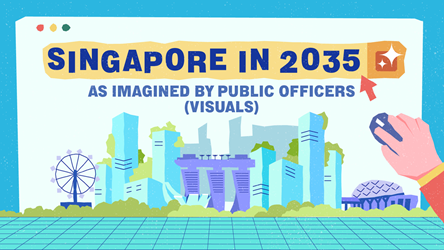The Audacity to Dream

To Jamie Lerner, the secret to innovation is in starting. He says you can’t always have all the answers before you begin something. “Of course, I [have] had failures because all my life was a commitment with imperfection… I like to say, better the grace of imperfection than perfection with no grace,” shares the 72-year-old architect.
After one has begun, he says, the next step must be to reshape and correct mistakes.

It is not that Mr Lerner rushes into projects impulsively. In fact, a lot of thought goes into his plans. “Planning takes time and it has to take time,” he concedes. “But sometimes through focal ideas, you can provoke new energy in the city [very quickly] that will help the process of planning.”
Mr Lerner calls this “urban acupuncture” – pinpointed interventions done quickly to benefit people and set off positive ripple effects. This could apply to physical infrastructure or even policies. The best urban acupuncture in New York, he says, is the city’s smallest park at East 53rd Street, a mere 13m by 32m.
There is the now famous story of how Mr Lerner, as a young mayor of Curitiba, Brazil, in the 1970s, transformed a bustling central street into a pedestrian mall in 72 hours. Unable to persuade store owners to his plan, he decided to put it into action. After careful planning, his staff moved in on a Friday night – digging up the road, putting down cobblestones, setting up streetlights, kiosks and potted plants – and by Monday morning, had made the street a pedestrian mall. The risk paid off: store-owners were so happy they even asked the mayor to extend it.
Guerrilla-type city planning may seem bizarre and unacceptable elsewhere, yet his derring-do convinced the people of Curitiba and Paraná (where he was governor) that his audacious ideas would work. He went on to transform a disused quarry into an opera house in two months; built the botanical gardens in three months and a museum in five.
Sustainable Living
The advocate of urban sustainability spends much time sharing ideas on improving public transport systems. In the 70s, faced with limited funds, he pioneered an aboveground bus system that worked like the subway. Dedicated bus lanes, tubular bus shelters where passengers prepaid their tickets and high frequency cycles helped move millions quickly and affordably. The Bus Rapid Transit idea has since been replicated in more than 80 cities.
Mr Lerner likes to joke that cars are like mothers-in-law: “We have to have good relationship with her but we shouldn’t let her command our life.” It is food for thought for car-loving cities like Singapore.
He praises the French Vélib system that rents out bicycles as public transportation and envisions a similar one for cars. “I’m not against the car,” he explains. “[But] owning a car is not important [because] you can have a car without owning it.” The ideas man has designed a mini electric car, the Dock-Dock (picture on left), that city slickers could use to run errands. “You pay only for your consumption.”
Making Ideas Work
He knows very well that his eccentric ideas could not have worked without the people’s support.

This was how he got cash-strapped Paraná to clean up its polluted bays. “We didn’t have the money so we had an agreement with the fishermen: If they caught fish, it belonged to them, if they caught garbage, we bought the garbage... The more garbage, the cleaner the bay. The cleaner the bay, the more fish. So they knew they could make a difference.”
He says his wild ideas stem from asking a simple question: “How can I make your life easier?” This kicks off a logical process culminating in practical, innovative solutions.
“Creativity is not by sudden inspiration. When you’re stuck and don’t know how to, it’s because your brain is asking ‘Feed me, feed me’. When you’re stuck it’s because you need more data, you need to know the problem better,” he says, emphasising the need to be on the ground to understand issues better.
And that ability to “know better” came from growing up in a neighbourhood in Curitiba that had a bustling railway station, teeming industries and a phantasmagoria circus. “On that street, I had my course of reality and my course of fantasy. I think that helped me to understand about needs and about dreams.”
Mr Lerner was a speaker at the 2010 World Cities Summit co-organised by the Centre for Liveable Cities and the Urban Redevelopment Authority. He was a finalist of the inaugural Lee Kuan Yew World City Prize.
Jamie Lerner's Ideas
Buying rubbish

When garbage trucks couldn’t get into the narrow alleys of Curitiba’s slums, the mayor introduced a plan that paid slum dwellers for the garbage they collected.
Vita the Turtle

Mr Lerner believes urban design should emulate Vita the turtle, a character in a children’s book he has written, as it is the ultimate example of integrated living and working. When people work, live and play in the same areas, they create vibrant neighbourhoods. Living close to your workplace also means less commuting and pollution. Imagine how sad the turtle would be if we cut it up into different enclaves, he says. “And that’s what we’re doing to our cities.”
Animal lawn mowers

- POSTED ON
Nov 4, 2010
- TEXT BY
Bridgette See









